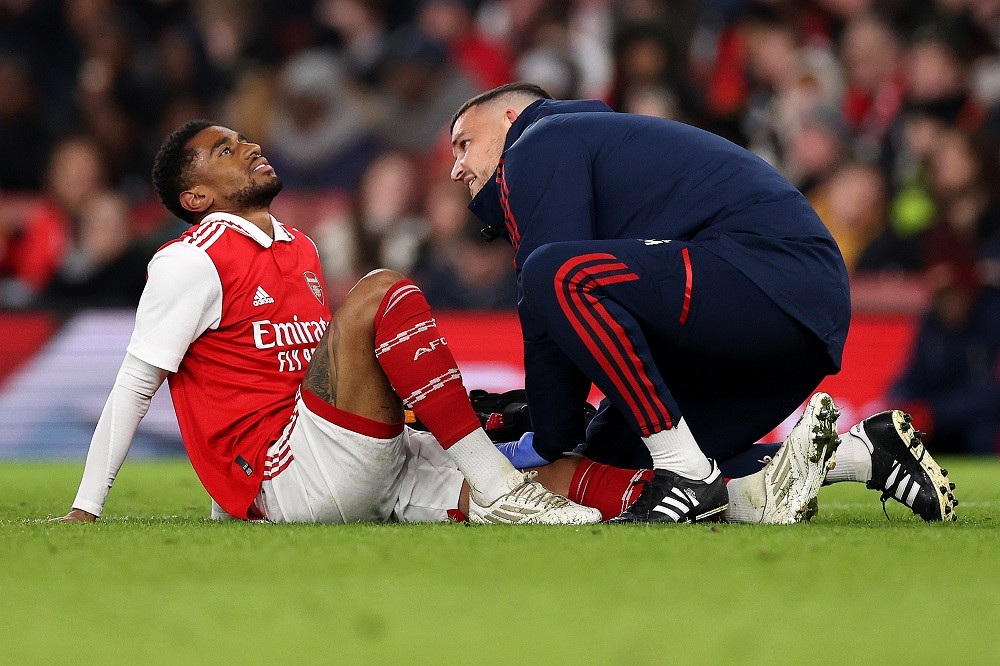Reiss Nelson has not been involved in an Arsenal matchday squad since the break during the World Cup in Qatar, so what’s up with the winger and when can we expect him back?

Reiss Nelson is currently out with a hamstring injury that he picked up in Arsenal’s friendly against Juventus back in December.
While the forward has recently posted a story on Instagram showing him running on a treadmill, Mikel Arteta said before Arsenal’s game against Manchester United on Sunday that he was not sure when we could expect to see the 23-year-old return.
Speaking back in December, Arteta said about Nelson’s injury, “The fact that he had to leave the pitch straight away is not good news, especially with someone like Reiss who is really powerful and fast.
“Let’s see what will happen. We know what we have to do and that doesn’t change the plans.”
At the time of writing, Arsenal have still not provided an estimated return date for Nelson, a little over a month since he was first injured, ruling out a Grade 1 strain.
Hamstring pull grades
Hamstring strains, or pulls, are common injuries in football players and are classified into three grades based on the severity of the injury:
Grade 1: A mild strain, or “pull,” in which only a few muscle fibres are damaged.
Symptoms may include mild discomfort, tightness, or a slight loss of strength in the affected muscle. Recovery times for this grade of injury can be relatively short, and players may be able to return to play within a few days to a week.
Grade 2: A moderate strain, in which a significant number of muscle fibres are damaged.
Symptoms may include moderate pain, swelling, and a significant loss of strength in the affected muscle. Recovery times for this grade of injury can be longer, and players may be unable to return to play for several weeks.
Grade 3: A severe strain, or complete tear, in which all muscle fibres are damaged and the muscle is completely torn.
Symptoms may include severe pain, swelling, and complete loss of strength in the affected muscle. Recovery times for this grade of injury can be several months, and players may be unable to return to play for several months.
It’s worth noting that the grade of injury is determined by a combination of the player’s symptoms, physical examination, and imaging studies such as MRI.
Rehabilitation protocols will vary depending on the grade of injury, and players with more severe injuries may require a longer period of rest and physical therapy to fully recover.

